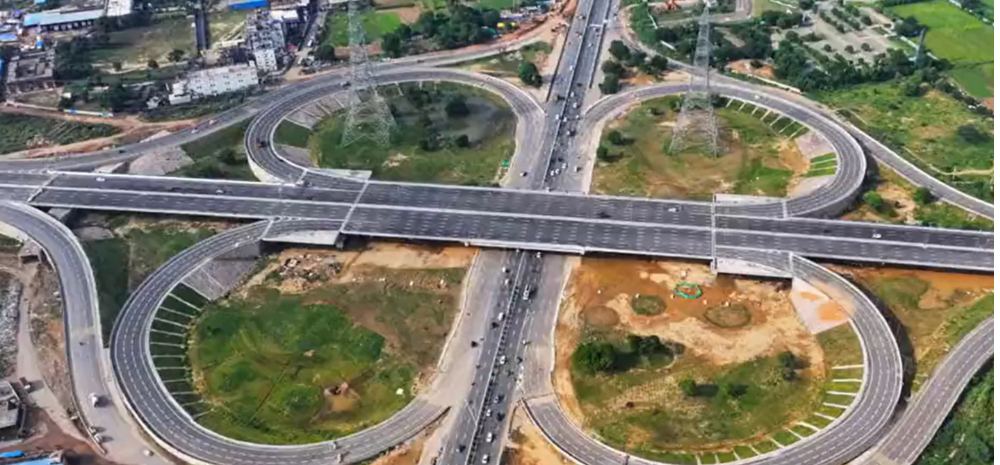India is set to witness a significant infrastructure milestone with the inauguration of the country’s first elevated expressway – the Dwarka Expressway. This ambitious project promises to transform the transportation landscape in the National Capital Region (NCR) and has garnered considerable attention for its scale and impact.

Here are seven key facts about the Dwarka Expressway that highlight its importance and potential:
- Length and Connectivity: The Dwarka Expressway, also known as the Northern Peripheral Road (NPR), spans a length of approximately 29 kilometers, connecting the bustling suburb of Dwarka in Delhi with the industrial hub of Manesar in Haryana. This vital corridor will serve as a crucial link between the two states, easing traffic congestion and reducing travel time for commuters.
- Elevated Structure: One of the most distinguishing features of the Dwarka Expressway is its elevated structure, which allows for seamless movement of vehicles above existing roadways and infrastructure. This elevated design minimizes disruptions to local traffic during construction and enhances safety by eliminating the risk of level crossings and collisions.
- Strategic Importance: The Dwarka Expressway holds strategic significance as a key component of the Delhi-Mumbai Industrial Corridor (DMIC) – a massive infrastructure project aimed at boosting economic growth and development along the western corridor of India. By providing direct connectivity to major industrial areas and logistics hubs, the expressway is poised to attract investment and spur economic activity in the region.
- Traffic Relief: With rapid urbanization and population growth in the NCR, traffic congestion has become a persistent issue, leading to long commute times and increased pollution levels. The Dwarka Expressway promises to alleviate these challenges by offering a faster and more efficient route for commuters, thereby reducing congestion on existing roads and highways.
- Real Estate Boom: The development of the Dwarka Expressway has spurred a real estate boom along its corridor, with developers rushing to capitalize on the newfound connectivity and accessibility it offers. Residential and commercial projects have sprung up along the expressway, transforming once-sleepy suburbs into vibrant urban centers with modern amenities and infrastructure.
- Environmental Impact: In addition to its economic and social benefits, the Dwarka Expressway is expected to have a positive environmental impact by reducing vehicle emissions and carbon footprint. By providing a smoother and more efficient transportation route, the expressway will encourage the use of public transport and shared mobility options, thereby contributing to cleaner air and a healthier environment.
- Future Expansion: The completion of the Dwarka Expressway marks the beginning of a new chapter in India’s infrastructure development journey. Plans are already underway for the extension of the expressway to connect with the proposed Delhi-Gurgaon-Sohna-Alwar Regional Rapid Transit System (RRTS), further enhancing connectivity and accessibility in the NCR.
In conclusion, the Dwarka Expressway represents a significant milestone in India’s infrastructure landscape, offering a lifeline for commuters, businesses, and residents alike. With its elevated design, strategic importance, and potential for future expansion, the expressway is poised to redefine mobility and connectivity in the National Capital Region for generations to come.













